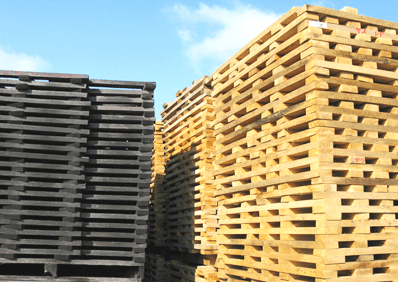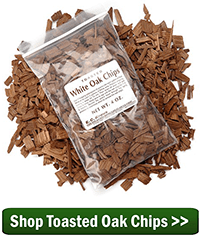 A friend asked me what is the difference between wine oak chips and untreated oak fire logs. Can you explain
A friend asked me what is the difference between wine oak chips and untreated oak fire logs. Can you explain
Arie E. — DE
—–
Hello Arie,
Thanks for such a great question. A lot of times home winemakers assume that the toasted oak chips they purchase are just any ole oak chips. This sometimes leads to the winemaker’s bold idea of making their own. While it is possible to make your own oak chips, it isn’t possible to do it successfully without some basic understanding of how oak chips are made. There are some important subtleties involved that will greatly influence how the oak chips will affect your wine.
The most basic of requirements is to use the right type of wood. Not any oak will do. It needs to be white oak, and even then only certain strains of white oak are sought after by barrel and oak chip producers. They use strains of white oak with an extremely tight grain. This keeps the tannin extraction into the wine under control while other flavor qualities are leached from the wood.
Once you have the right wood, it then needs to be aged. Normally, the wood is cut into strips called staves and cross stacked out in the weather for 1 to 3 years. This does two things: 1) it dries the wood out; 2) it leaches out the unwanted sap and other impurities. The cross stacks are re-stacked from time to time. This is to even out the effects of the weathering.
 This is the same process that is used to prepare wood for the production of oak wine barrels. In fact, many times toasted oak chips are made from the scraps of wood that barrel coopers cut off when making the barrel head, shaping staves, and such.
This is the same process that is used to prepare wood for the production of oak wine barrels. In fact, many times toasted oak chips are made from the scraps of wood that barrel coopers cut off when making the barrel head, shaping staves, and such.
Now that you have the right type of wood that has been aged, it is now time to toast it. Toasting the wood is an import part of how oak chips are made. This is when the sweet flavors of the wood are risen to the surface through heat.
The heat turns the various carbohydrates that are in the wood into sugars. It also raises and concentrates flavor compounds such as vanillin to the surface so they can be easily extracted into the wine. These flavors compounds combined with wood sugars and tannin are what create the oak character in the wine.
The flavors that oak chips can add to a wine vary based on how the toasting is done. The temperatures and the length of time used are important in the creation of the oak chips’ flavor profile. As the temperature rises and time increases, different flavors are produced: sweet / vanilla / coconut / butterscotch / toast / clove / almond / burnt. The temperature range is typically from 320°F. to 420°F., but the length of time is just as important.
As you can see, there are a lot of specifics going on. It’s not like throwing a log on the fire or anything like that. It’s about controlling the specific. And, even then there is still a lot of room for variations.
Arie, this is the basics of how oak chips are made. Keep in mind this is just the basics. Over the decades a lot more science and precision has gone into the production of oak barrels and oak chips as well.
Happy Winemaking,
Ed Kraus
—–
Ed Kraus is a 3rd generation home brewer/winemaker and has been an owner of E. C. Kraus since 1999. He has been helping individuals make better wine and beer for over 25 years.
